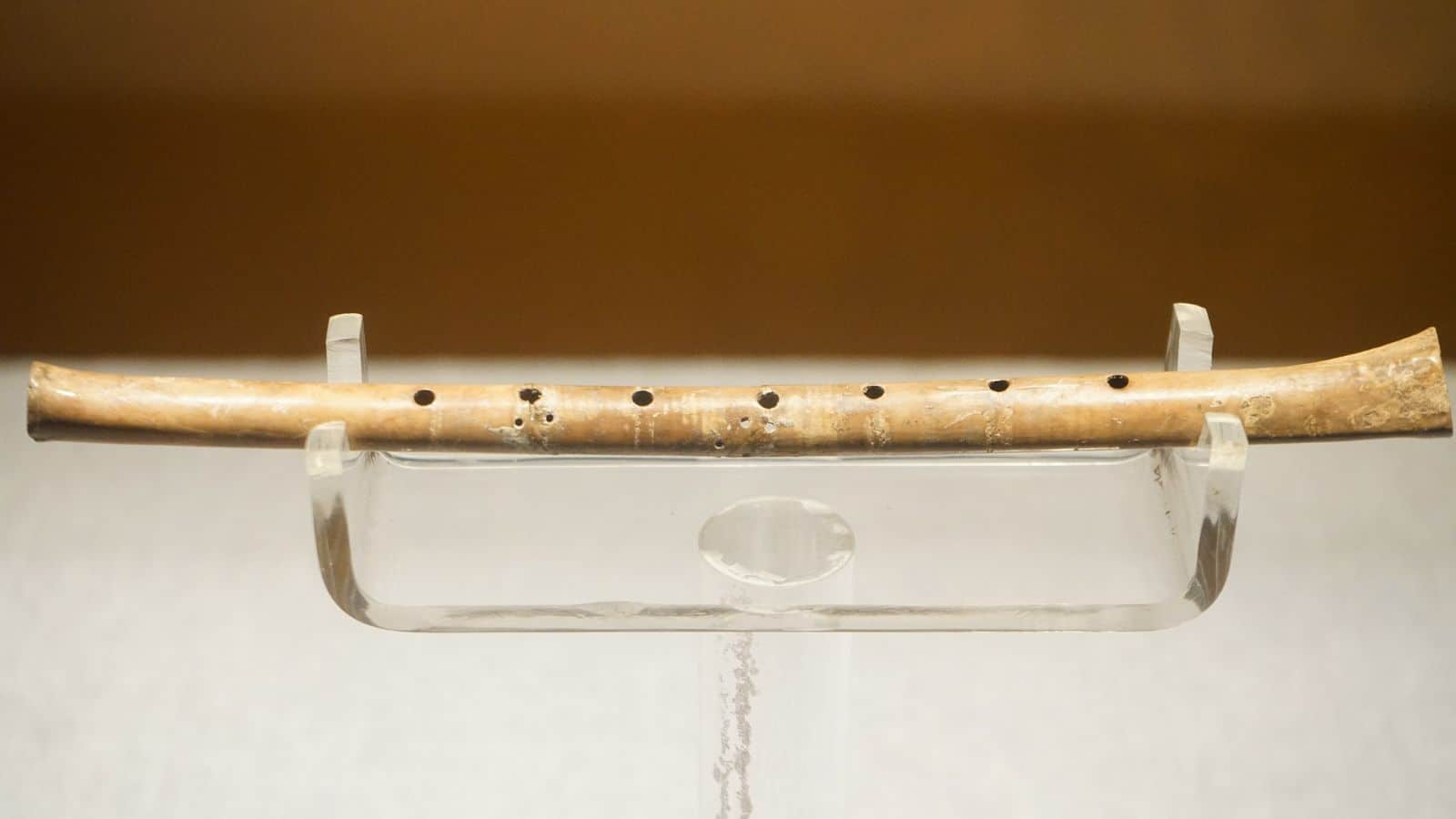
Music has been an integral part of the human experience for tens of thousands of years. No one knows exactly when or how music-making began, though it is clear that it originated with the voice or perhaps with basic percussion instruments.
Over time, humans began to discover and develop new ways to produce sounds that expressed emotion, brought people together, and marked particular occasions.
Though the flute was certainly not the first means of producing music, it dates back to very early times.
Throughout history the flute has been updated and improved until it reached its current form. Each form of the flute has its own unique history and purpose.
Why Was The Flute Invented?
How old is the flute?
The first known flute potentially dates back to 60,000 years ago. It was found in 1995 in a cave called Divje babe, located in Cerkno, a region of Slovenia.
It is believed to have been crafted by Neanderthals, a group of early homo sapiens that became extinct as the human race developed.
The flute is extremely primitive; it is carved out of bone and only has four tone holes. While there is some debate as to the authenticity of the instrument and its age, most archaeologists believe that it was an intentional musical instrument based on the placement and size of the holes.
However, there are no other known flutes dating back to this time. All the other flutes that have been discovered from prehistoric times are from nearly 20,000 years later.
Three flutes were found in a cave in southern Germany that are believed to be between 40,000 and 45,000 years old. Some experts believe that these are truly the world’s oldest flutes, and that the Neanderthal flute should not be considered an instrument.
These flutes were also carved of bone, in this case from a bird, and had three tone holes. It is not known for certain for what purpose these instruments were created, but archaeologists believe that they could have been used in religious rites or simply for fun.
Regardless of the purpose, the existence of these instruments suggest that there was some community element to human living by this time, and that music could have served as a means of bringing people together.
Earliest “Playable” Flutes
While of course these early flutes can technically be played, they are not what we currently are used to. The typical flutist would have a hard time making a sound on one of these bone flutes.
As time progressed, so did musical instruments. In China, flutes that date to about 9,000 years ago were discovered in 1999.
These instruments show significant advancements from its European predecessors. Though also made of bone, they have seven tone holes and thus are capable of playing successive notes that resemble a scale.
Again, it is likely that these flutes were invented for the purpose of religious ceremonies or other important gatherings.
Though the purpose of the instrument remained the same, it is useful to note that music and the flute were being practiced all across the world as an important part of culture.
Transverse Flutes
The earliest flutes were generally played vertically, like a recorder or a clarinet (though without a reed). A transverse flute, however, is what we play today – a flute that is held horizontally and played by blowing across a mouthpiece.
It is not clear when the first transverse flute was actually invented. Artistic depictions of humans playing the transverse flute exist as early as 11,000 years ago, and are present in cultures across the world – Greece, Rome, Etruria, China, and India, among others.
However, the earliest discovered transverse instrument was discovered in China. Called the chi, this flute was made of bamboo and can be traced to the fifth century BCE. Over time, as written history begins, we start to see more evidence of the flute being used in religious ceremonies.
Predecessors to the Modern Flute
It took a long time for the flute to develop into an instrument that resembles what we play on today in orchestras and other ensembles. In Europe, the predecessor to the modern flute began to appear in the Middle Ages, likely introduced through trade with the East.
This flute began to be used for other purposes other than religion; it was often played in small ensembles for performances at court or in the homes of the nobility, and was also used in military bands.
Because of its ability to reach high notes, it was used to communicate from far distances during wartime.
These flutes were made out of wood and continued to develop over time. Flute makers made improvements such as increasing the bore, dividing it into sections so that it could be stored and moved easily, and creating smaller tone holes so that more pitches could be played.
Improvements were also made in intonation and tone quality, making the flute a more pleasant instrument to listen to. These adjustments were made so that the flute could be used in more settings; the flute became used as a solo instrument, in chamber music, and eventually in an orchestra.
The addition of keys made this especially possible. Keyed flutes began to appear in Europe around the 1700s. However, there was not a lot of consistency between the keyed instruments. Different cities and countries developed different keyed flutes with varying levels of success.
The Modern Boehm Flute
Though the flute is one of the oldest and most historic instruments, it quickly became overshadowed by string instruments, such as the violin and cello, as well as the piano. These instruments were more sophisticated technically and expressively.
As a result, it was important that the flute adapt in order to stay relevant in the music scene. This may have been the impetus that inventor and musician Theobald Boehm needed to create the basis for the modern flute.
After a series of developments, Boehm created what is now known as the Boehm flute in 1847. These flutes were made of metal rather than wood, had a cylindrical bore rather than a conical one, used more keys, and was vastly superior in tone quality and technical capability.
Though flutes continued to be made from wood, metal flutes also began to rise in popularity. Over time, the Boehm system took over entirely. While flutes continue to see improvement, there has been no major shift in conception since Boehm’s 1847 invention.
Thanks to Boehm, flutes are now able to be used as virtuosic solo instruments and as major players in the orchestra. They are still important parts of military ensembles, though of course, these ensembles have changed drastically over the years.
At their core, however, the reasons for the invention of any of these flutes are the same: music is part of life, and the flute is an excellent medium to express it.

